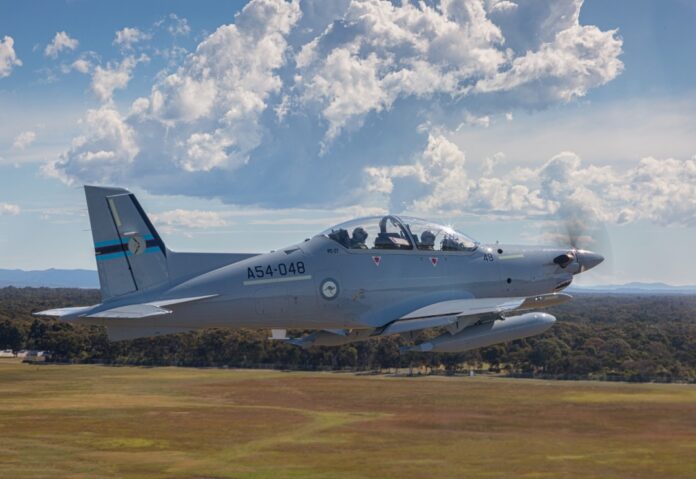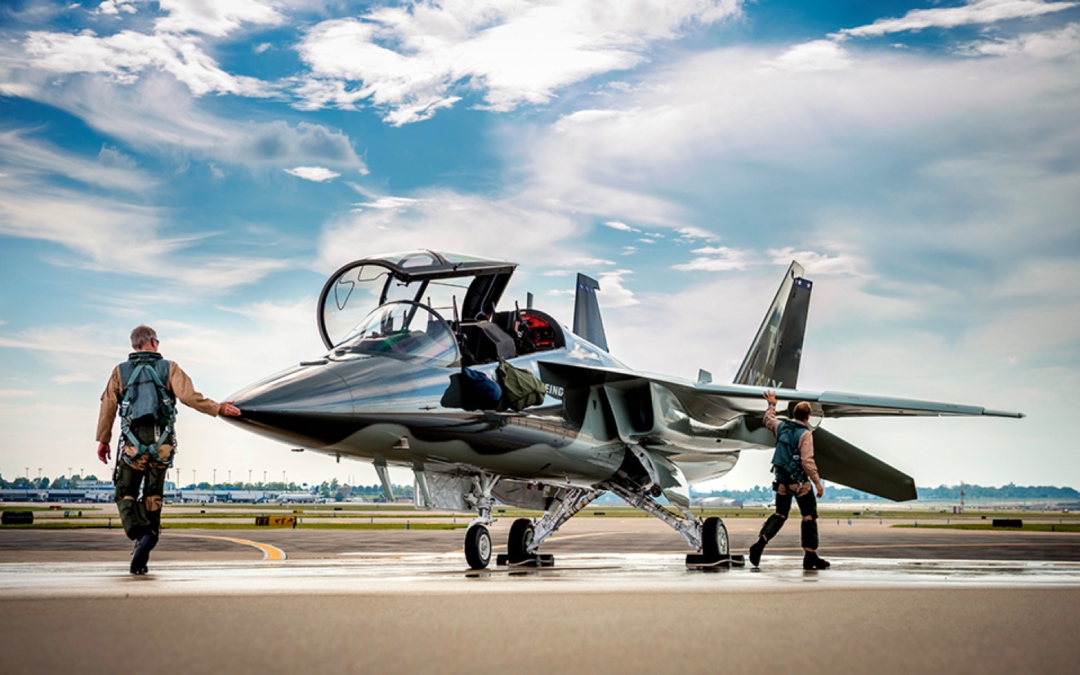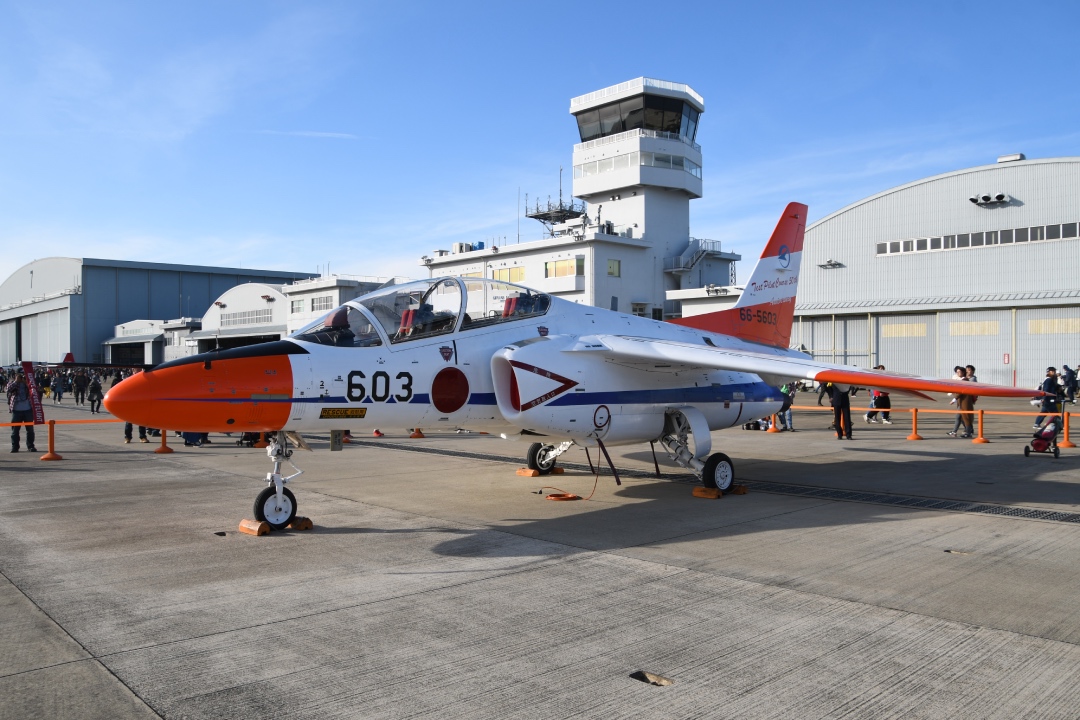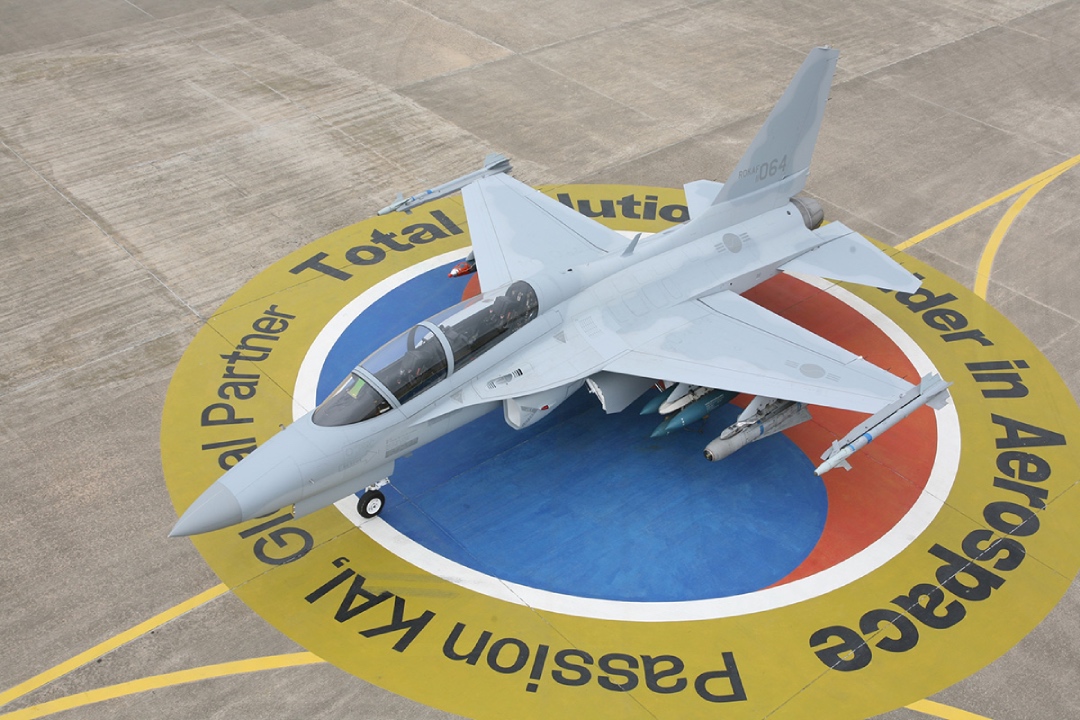
The military pilot training world is changing rapidly, undergoing a seismic shift as it tries to adapt to new requirements, both budgetary and operational.
Although the latest generation of frontline aircraft tend to be easier to fly than their predecessors in terms of their handling characteristics, and in terms of the ‘man-machine interface’, they demand much more in terms of systems management. This can mean that some previous generation advanced trainers may present unrepresentative or unrealistic handling challenges, lack a user-friendly glass cockpit and good human machine interface (HMI) and yet do not adequately stretch the student pilot’s systems management skills and capacity.
At the same time there are contradictory and competing requirements to ‘download’ training from expensive-to-operate frontline types to cheaper advanced trainers, and from advanced trainers to basic trainers in an effort to shave costs from the training pipeline. This can actually increase some costs, as an advanced trainer that is also flying some of the ‘OCU syllabus’ will require higher performance and greater avionics sophistication (with radar and sensor emulation, for example) than a ‘plain’ advanced trainer would need. This also tends to mitigate against the use of a turboprop-powered advanced trainer, since even the fastest of these (such as the Pilatus PC-21) are just about capable of 360 knots (666 kilometres per hour) – 200kts (370km/h) slower than many jet trainers – and arguably too slow to fly representative sortie profiles, let alone to pile on the workload to really stretch student pilots.
And yet many air forces cannot simply buy the trainer aircraft that best meet their requirements but instead ‘buy in’ a contractor-owned, contractor-operated service in which the service provider (and not the customer) decides what aircraft type will be operated. This is why, for example, the United Kingdom’s Royal Air Force (RAF) operates the Textron T-6C Texan as its basic trainer, rather than (for example) the Pilatus PC-21.
Traditionally, most air forces followed a very similar training syllabus, using a light, piston-engined trainer (usually side-by-side) for ab initio, primary or elementary training or screening (sometimes known as Phase I). Some smaller and less well funded air forces may use ultra-light aircraft, motor gliders or even gliders for this role, while others have entirely privatised the provision of elementary flying training. In Australia, for example, civilian contractors now conduct all Royal Australian Air Force (RAAF) and Royal Australian Navy (RAN) elementary/primary flight training.
Phase II or basic training follows the ab initio or screening phase, once usually flown on a jet trainer with side-by-side seating (like the BAC Jet Provost or Cessna T-37) but now more often flown on a turboprop with stepped tandem cockpits (examples including the Pilatus PC-9, Textron T-6 Texan and Embraer Tucano). Modern turboprop trainers like these can replicate the handling characteristics of a jet aircraft, with a single ‘power lever’ rather than separate throttle, RPM/propeller pitch controls. The aircraft are more demanding than most elementary trainers, allowing a student’s pilot aptitude to be challenged more rigorously and assessed more accurately, while any lack of speed can be compensated for by increasing pilot workload in other ways.
Not all air forces divide the pilot training syllabus into the same phases, and some use phases of different durations. Sometimes an air force equipped with jet-powered basic trainers (like the Leonardo M-345 or its precursors) or with higher-performance turboprops, might have a longer ‘basic’ phase and a shorter advanced phase.
Pilots will usually be ‘streamed’ at the end of the basic phase, according to aptitude and air force needs, usually with the strongest candidates going on to ‘fast jet’ training, and with others going on to rotary-wing or multi-engined training courses. A few air forces may ‘stream’ pilots at an earlier stage, and a very few at a later stage. Flying qualification badges or ‘Wings’ are often awarded on the successful completion of basic training.

Advanced Training
Those pilots destined for fast jet aircraft typically progress to ‘Advanced’ or ‘Phase III’ training. This is usually undertaken on a higher performance trainer aircraft, usually a jet, often with a swept wing, normally capable of high subsonic speeds and high-energy manoeuvres, and sometimes equipped with systems that emulate modern weapons systems and sensors.
Previous generations of advanced trainers including the Northrop T-38 Talon, the Dassault/Dornier Alpha Jet, the Aero L-39 and early versions of the BAE Systems Hawk are starting to give way to more modern advanced trainers which may feature reconfigurable displays and controls, as well as onboard emulation systems. These include the latest versions of the Hawk, as well as the Boeing T-7A Redhawk, the KAI T-50 Golden Eagle, and the Leonardo M-346 Master.
But at the same time, some air forces are delivering advanced Phase III and even Phase IV training on turboprops. The Swiss Air Force has used the PC-21 for Phase III/IV for more than ten years, and the French Air and Space Force recently turned to Dassault Aviation and Babcock to provide between nine and 13 Pilatus PC-21 aircraft for Phase IV advanced lead-in fighter pilot training, replacing Alpha Jets at Cazaux, meaning that some French fighter pilots will now undergo Phase II, III and IV training on the high speed Swiss turboprop!
Phase IV or ‘lead in fighter training’ (LIFT) often uses the same aircraft types as are used for Phase III, providing a stepping stone between advanced training and operational conversion training on a frontline aircraft type.
Live/Virtual Construct
In the later phases of flying training, increasing use is being made of the Live Virtual Constructive concept in which ‘Live’ aircraft (real aircraft in flight) are linked with ‘Virtual’ aircraft (being flown in ground-based simulators) and ‘Constructive’ aircraft (being created in a computer-generated operating scenario). This allows more complex training scenarios to be generated at relatively lower cost.
Cost savings are the driver behind many of the current and forthcoming developments in flying training, and particularly the increasing use of synthetics, which include computer based training devices and part-task trainers to teach specific skills or the use of specific systems, and a variety of fixed-base and full motion simulators, with different visual systems.
Synthetics can save cost, and promise a lower environmental impact, while simulators offer a useful solution for those training scenarios that carry a high level of risk. If the risk of training for a particular situation is higher than the risk of suffering that failure in operation, then a simulator might be preferable to an in-flight training scenario. But simulators also have real limitations, and cannot reproduce the sentient experience, nor the psychological and physiological pressures. The US Air Force’s Pilot Training Next (PTN) programme makes greater use of virtual reality systems, but has already proved problematic in some areas. Anecdotal evidence suggests that some students who were sent on the USAF’s PTN programme had to undergo remedial flying training at Valley on their return to the UK.
The balance between simulation and ‘live’ training involves operational, financial, safety, morale and environmental considerations – and ultimately must depend on military judgement.
Another potential avenue for cost savings could be reducing the number of different aircraft types flown by a student pilot on his or her route to the frontline. Currently, most pilots will fly a different aircraft type in each Phase of flying training, perhaps flying the same type at Phase IV as they did at Phase III. In Spain, efforts are underway to produce a streamlined training syllabus with the PC-21 replacing the T-35C Pillan for Phase I training, and supplanting the CASA 101 previously used for Phase II. The new Airbus Spain AFJT would then take student pilots from the last part of the Phase II syllabus through to OCU, replacing some of the CASA syllabus and the two phases now flown using the F-5M.
Among a series of trials undertaken by the the RAF was a Prefect-direct to-Hawk initiative, which saw two young pilots undertake a tailored Phase I/II course on the Grob 120TP leading to Wings and conversion to the BAE Hawk for Phase III/IV.
On the other hand, some nations have deliberately chosen a more expensive approach to the procurement of new trainer aircraft, opting to develop indigenous trainer designs at huge cost, instead of buying an existing aircraft ‘off the shelf’. Trainer aircraft have proved to be a particularly popular ‘launch’ product for newly established local aerospace industries, being small in size and lacking some of the complexity of frontline combat aircraft.
In the Asia-Pacific region, India, Japan, Korea, and Taiwan have all produced successful indigenous trainer designs, most of which are currently in development or in operational service, while Pakistan has successfully licence built and marketed its Saab MFI-17-based Mushshak and the locally assembled K-8 Karakorum (a version of the Chinese Hongdu JL-8).
Though it has been constitutionally prevented from exporting military aircraft, Japan has a flourishing aerospace industry, and has produced a succession of trainer aircraft, including the Sabre-like Fuji T-1 and the Jaguar-like Mitsubishi T-2. Indigenous trainers in service today include the Fuji T-7 (previously known as the T-3 Kai) a tandem-seat primary trainer aircraft developed from Fuji Heavy Industries’ earlier T-3 trainer, with a 450shp Allison 250 turboprop engine replacing the original aircraft’s 340hp Lycoming IGSO-480 six-cylinder horizontally opposed air-cooled piston engine. The aircraft bears a passing resemblance to the Beech T-34 Mentor, from which the T-3 was developed.
For advanced training, the Japanese Air Self Defence Force fields the Kawasaki T-4 – an aircraft which has been described as looking like an ‘Alpha Jet on steroids’. The XT-4 prototype made its maiden flight on 29 July 1985, and production aircraft were delivered from September 1988. Large numbers of the 208 or so built remain in use today. The type was powered by a pair of Ishikawajima-Harima F3-IHI-30 engines – which represented the first all-Japanese production turbofan engine and which gave the aircraft a 20 per cent greater thrust-to-weight ratio than the contemporary BAE Hawk and Dassault Alpha Jet. With a lower wing loading than its rivals, the T-4 also proved extremely agile, and it climbed like the proverbial ‘homesick angel’.

India has produced a succession of indigenous trainer aircraft, from the Chipmunk-like HT-2 and the long-retired HPT-32 to the HJT-16 Kiran, a jet-powered basic trainer with side-by-side seating which remains in service in small numbers. Currently under development are the HAL HTT-40, a tandem-seat turboprop powered by a 950shp Honeywell Garrett TPE331-12B engine (the same engine as the Shorts-built version of the Tucano), of similar configuration to the PC-7, but about two feet longer and with about two feet greater span. The aircraft first flew on 31 May 2016. The Defence Acquisition Council approved the procurement of 106 HTT-40s for the Indian Air Force in August 2020, and current requirements are for 70 HTT40s with an option on 38 more.
Another indigenous Indian trainer already flying in prototype form is the HAL HJT-36 Sitara. Powered by a single powerful NPO Saturn AL-55I the HJT-36 otherwise has a similar configuration to the bigger, twin AL-55I engined MiG AT. The SNECMA Turbomeca Larzac-powered HJT-16 prototype first flew on 7 March 2003, but was found to be underpowered. The initial series production aircraft therefore used a new Russian engine, but was then found to have unacceptable spinning characteristics, and an initial order for 73 aircraft was cancelled and only about a dozen of the original design were built.

A modified version did not fly until April 2019, but in January 2022, the modified aircraft successfully demonstrated six-turn spins (and recoveries) in both directions, hopefully clearing the way to production orders.
For Taiwan, indigenous aircraft design is all about having sufficient local capability to be able to ride out any interruptions to the flow of defence equipment from the USA, and to demonstrate (especially to that partner) a degree of autonomy. This is demonstrated even in the name given to the country’s AIDC AT-3 Tzu Chung (‘Self Reliance’). This neat tandem-seat jet trainer was designed with some help from Northrop and made its maiden flight on 16 September 1980, and two prototypes were followed by 60 production aircraft. The programme also provided invaluable experience for AIDC before it embarked on the more ambitious AIDC F-CK-1 Ching-Kuo Indigenous Defense Fighter (IDF) programme.
The Ching Kuo fighter formed the basis of the new AT-5 Brave Eagle, an advanced trainer developed as a replacement for the RoCAF’s fleet of AIDC AT-3s and Northrop F-5s. The programme was intended to provide a cheaper solution than simply buying an equivalent number of KAI T-50s, and this prevented a clean sheet of paper design. Instead AIDC looked at a modernised derivative of the AT-3 (the AT-3 MAX), a similar evolved variant of the Ching-Kuo (the XAT-5 Blue Magpie), and at local assembly of the Alenia Aermacchi M-346 Master. The XAT-5 was selected for development in 2017.

Though based on the Ching-Kuo and sharing the same engines, the Brave Eagle has a composite fuselage and has only 20 percent parts commonality with the F-CK-1. The aerofoil is slightly revised, in order to increase stability at low speed, with the added benefit of providing increased fuel tankage. More than 55 percent of the components of the Brave Eagle are made in Taiwan.
The first of four prototypes was rolled out in the presence of Taiwanese President Tsai Ing-wen in September 2019, and made its maiden flight on 10 June 2020. It is expected to enter service from 2026.
The Republic of Korea will soon be able to train its military pilots ‘right through’ on indigenously designed aircraft! KAI flew the first prototype of the KT-100 elementary trainer variant, on 5 October 2015. The aircraft is a military derivative of the KAI KC-100 Naraon light aircraft – the first civil design to be developed and manufactured by Korea Aerospace Industries (KAI). The KT-100 will replace 20 Ilyushin Il-103 aircraft currently used by the Republic of Korea Air Force (RoKAF) academy.
RoKAF pilots will then progress to the KAI KT-1 Woongbi, the first completely indigenous Korean aircraft. A tandem-seat turboprop trainer strongly reminiscent of the Pilatus PC-9, the KT-1 first flew in November 1991, and in 1999 an initial production contract was signed for 85 aircraft, with provisions for an additional 20, which was subsequently exercised, the RoKAF receiving 85 KT-1 trainers and 20 KA-1 light attack aircraft. The type has been exported to Indonesia, Peru, Senegal and Turkey, where it has spawned a Turkish derivative – the TAI Hürkuş.

For advanced training, the RoKAF has the KAI T-50 Golden Eagle, which is powered by a single General Electric F404-102 turbofan engine license-produced by Samsung Techwin, and upgraded with a General Electric/KAI-developed FADEC system. The T-50 was developed by KAI with input from Lockheed Martin, and a prototype made its maiden flight in 2002. The aircraft entered active service with the Republic of Korea Air Force (ROKAF) in 2005, and was subsequently exported to Indonesia, Iraq, the Philippines, and Thailand.
The baseline T-50 advanced trainer has been developed into the TA-50 for lead-in fighter training and light attack, equipped with an Elta EL/M-2032 fire control radar, as well as the FA-50 light combat aircraft which adds internal fuel capacity, enhanced avionics, a longer radome and a tactical datalink. In 2016, KAI revealed a new derivative tailored to the US TX requirement. This T-50A was based on the FA-50 and featured a ‘fifth-generation’ cockpit with a large area display, an aerial refuelling receptacle, cockpit multifunction display, a dorsal hump accommodating extra internal fuel and an aerial refuelling receptacle, and an embedded training system. In the end, Boeing were able to undercut the T-50 on price, and provide better training capabilities, but it would be a mistake to dismiss the T-50, which is certain to win further orders.
by Jon Lake












